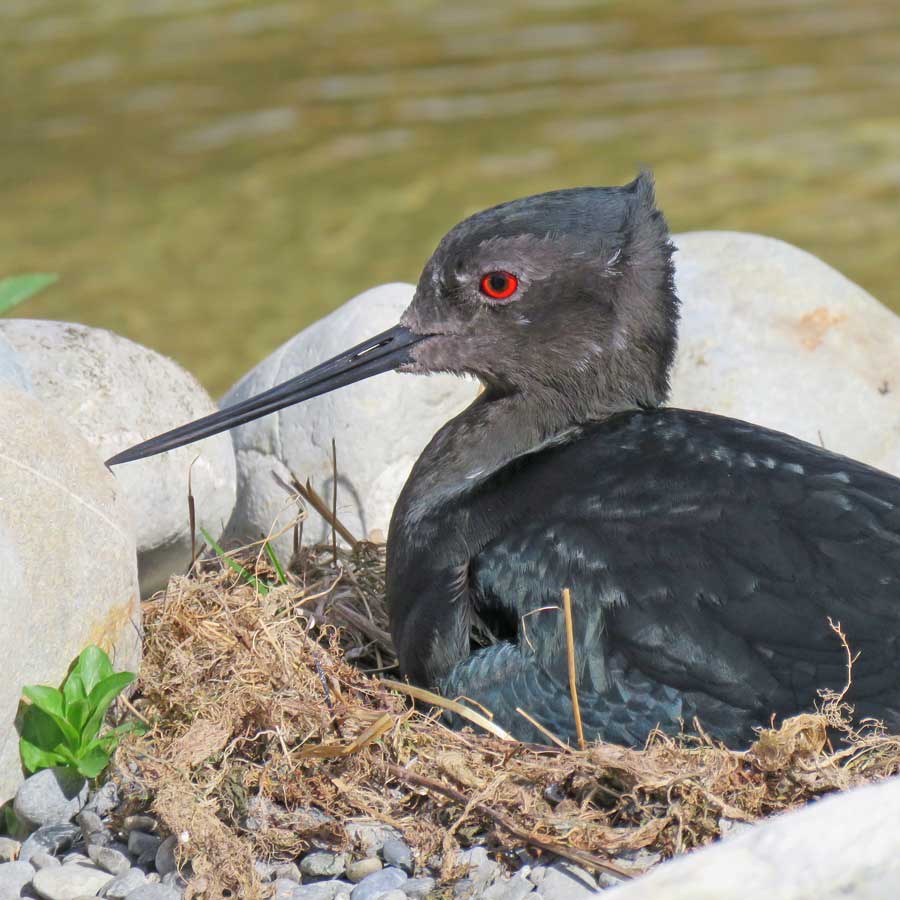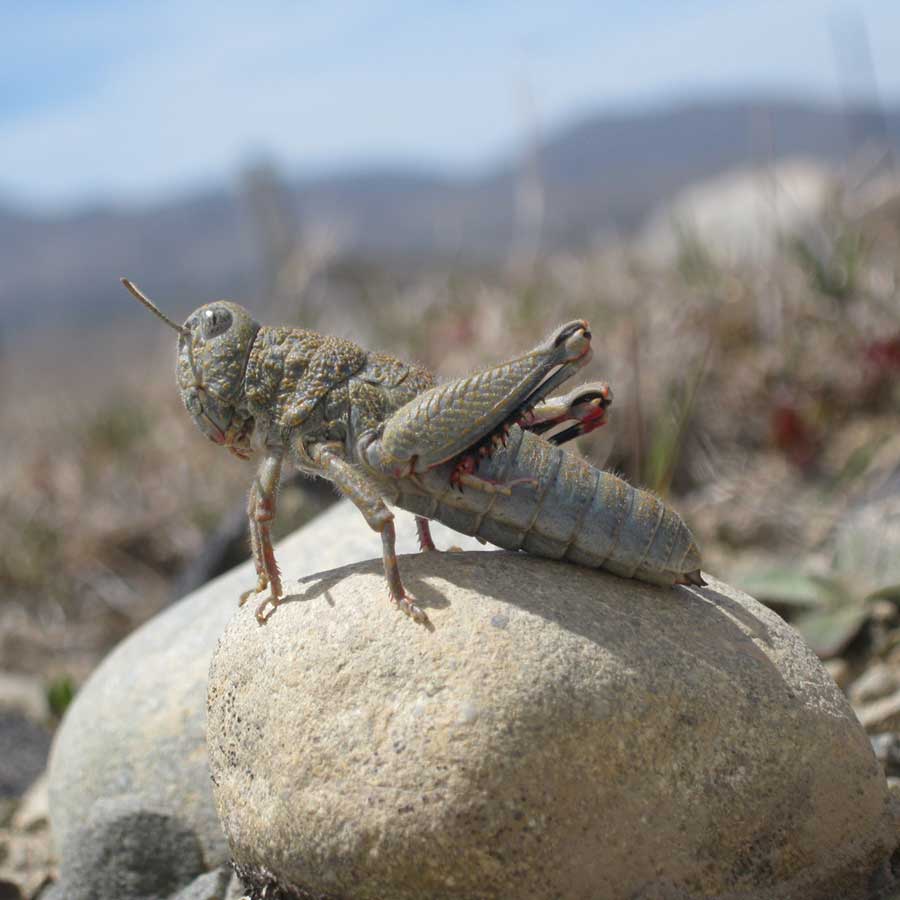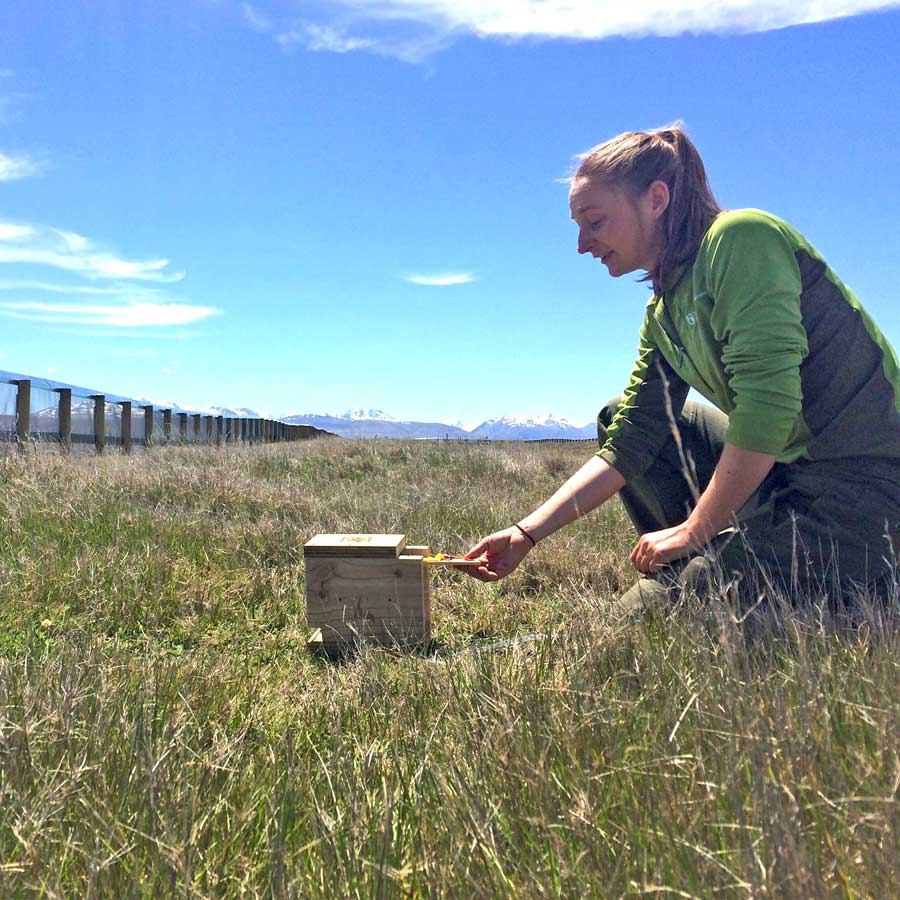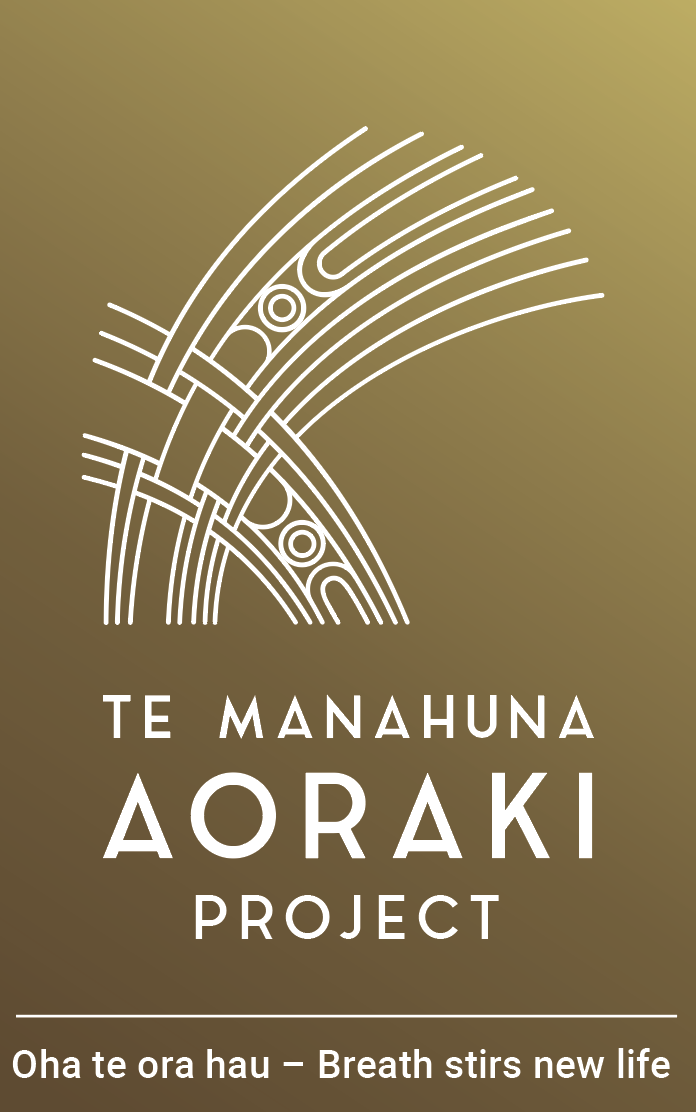Protection
Native species need a helping hand. Manawhenua are prioritising projects to protect native fish and restore Motuariki Island, and DOC has brought back the kakī/black stilt from the brink of extinction. We have even built a fenced sanctuary to protect an insect…
Native fish protection
A rūnaka project has reduced invasive fish by 90% in its first season.
Fork Stream is a beautiful spring-fed awa on Glenmore Station. It is vital habitat for native species including the nationally threatened bignose Galaxias macronasus, and upland long-jaw Galaxias.
Introduced trout compete with native fish for food and habitat. A rūnaka team trained in electric fishing methods spent five weeks in autumn 2021 fishing the true left, or east, of the stream and its tributaries.
The team, from Te Rūnaka o Arowhenua, Te Rūnaka o Moeraki and Te Rūnaka o Waihao, monitor the health of the awa, remove invasive fish and put them below a weir that acts as a barrier to stop them returning. The remaining trout will be removed from the awa over time.
Trapping totals
(at 8/11/2021)
BROWN TROUT REMOVED
RAINBOW TROUT REMOVED
Motuariki Island
According to Māori oral traditions the earliest people to inhabit Te Waipounamu (the South Island) were Hāwea, Rapawai and Waitaha. Te Rapawai established a pä site on Motuariki, and it was used for some time as a permanent living base.
It is an extremely spiritual place and rūnaka want to understand the cultural and biodiversity values of the island.
A fire in 2014 is thought to have destroyed 80% of the island’s vegetation and rūnaka representatives are keen to get an appreciation of what indigenous plants and animals remain and the island’s cultural and archaeological importance.
The first task is to complete a comprehensive management plan for the island.
Kaki Recovery Programme
Our colleagues at the Department of Conservation’s Kakī Recovery Programme are doing great work to protect the world’s rarest wading bird.
Kakī / black stilt used to be common across New Zealand, but are now critically endangered and only found in the Mackenzie and upper Waitaki basins.
In 1981, the wild population was reduced to only 23 birds. Numbers have now risen to 170 adults in the wild, thanks to the Kakī Recovery Programme and others, like the Isaac Conservation and Wildlife Trust.
One of our partners, Re:Wild (formally Global Wildlife Conservation), has funded an aviary and brooder to help boost the kakī population. It was officially opened by the Conservation Minister in 2018.
Rearing kakī in captivity significantly increases their chances of survival by preventing predation when they are at their most vulnerable. As well as having captive breeding pairs, kakī eggs are collected from the wild and then incubated. Te Manahuna landowners help by alerting rangers when they see kakī nesting, and allow trapping on their land.
COMING SOON
KAKI
CAM

The chicks are hand-reared and released into the aviaries at 35-days-old. They are fed twice daily until they are released back into the wild at around nine months, the same age they would usually leave their parents.
The wild pairs go on to lay more clutches and, with our enhanced trapping network, they should also have more opportunities to successfully breed and fledge chicks in the wild.
BEST KAKĪ VIEWING SPOTS
The best kakī viewing spots are along the Takapō/Tekapo lakeshore, the east side of Lake Pukaki, or the Tasman Delta near the Glentanner Park Centre.
Latest kakī numbers
(at 8/11/2021)
Adult kakī in the wild
JUVENILE KAKĪ RELEASED IN 2021
Watch the video about how the new brooder and aviary are helping kakī
Robust grasshoppers
Robust grasshoppers are such awesome insects, we built a 6000m2 fenced area to protect and study them. We think it’s the world’s first predator-exclusion fence for insects.

Te Manahuna Aoraki Project is working with DOC science advisor on invertebrates Dr Tara Murray and University of Canterbury students to monitor the grasshoppers both inside and outside the fence to see whether a predator-free environment positively impacts grasshopper numbers. We’ll need at least four seasons of monitoring to get a good picture as grasshoppers have a two-year life span.
We’re also keeping an eye on how the fence performs with the wind and snow loading during a Mackenzie Basin winter.
Robust grasshoppers (Brachaspis robustus) are extremely smelly, and while they are good at jumping, they are hopeless at landing. They are endangered and normally only found in the open gravel riverbeds of the Mackenzie Basin. However, one of the largest known populations is found on a 3.5km long unused gravel road built during the construction of the Tekapo canal in the 1970s. It’s not known if the population extended naturally from the nearby river, or if it established as a result of being moved during the canal construction.
The fence was built in 2018 and hedgehogs, rats, stoats and ferrets removed from the enclosure. In 2021, we noticed skink numbers had exploded inside the fence so DOC has since moved them out in case they were eating the grasshoppers.

Watch this video about how we monitor robust grasshoppers inside and outside the fenced enclosure
Photo credits: Kate Lawrence, Dave Kwant, Robyn Janes, Jennifer Schori
